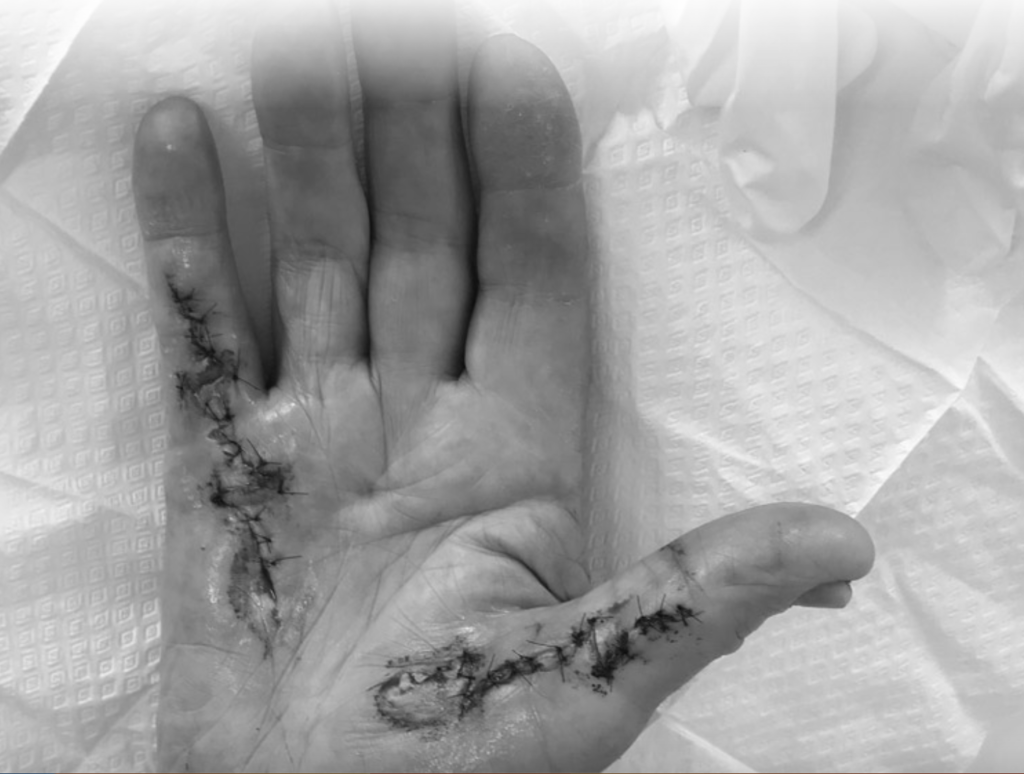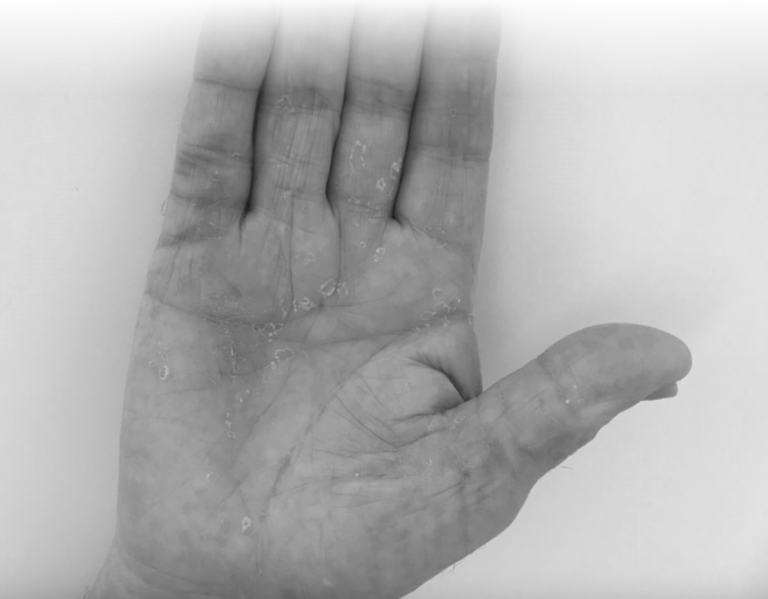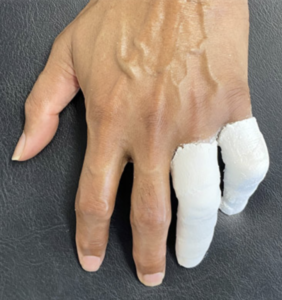Dupuytren’s disease is not as well-known as Carpal Tunnel Syndrome or Arthritis for example, thus making it difficult to identify when you may have developed the injury. In some patients, a Dupuytren’s contracture can interfere with hand function, making it difficult for them to perform their daily activities. Keep reading to learn more about this disease so you can easily identify and seek treatment from a skilled physiotherapist if/when needed.
Understanding Dupuytren’s Disease
Dupuytren’s disease, pronounced (du-pre-tranz), was named after Dupuytren, who first described the disease mechanism and the necessary operation to treat it. The cause of Dupuytren’s disease is not completely known, but most evidence points towards genetics as having the most important role, with males being more likely to develop the disease than their female counterparts.
Dupuytren’s disease develops in the fascia, which is the connective tissue that holds our skin and muscle together within the palm of our hands. The fascia becomes more fibrotic and progressively thickens and contracts and as a result, palpable nodules and chords/bands form in the palm; affecting the ring and small finger areas. The following picture is Day 1 post operation and then at 8 weeks post operation. A beautiful result can be achieved, with full finger range restored.


How to Treat Dupuytren’s Disease
To remove the diseased tissue, a palmar fasciotomy can be performed by a plastic or hand surgeon. More commonly, a z-plasty procedure is done to minimise contractures from the scar tissue in the palm of the hand. As it is quite an invasive operation, having a skilled physiotherapist is essential to prevent the risk of severe post-op scarring.
Depending on the injury, there may be non-surgical options available for you, however it is best to consult with a physiotherapist to gain advice on what the best path is for you.
Casting Dupuytren’s Disease
Recently, we had a lovely gentleman present to our practice 4 months post-surgery with significant 55º PIPJ contractures of his ring and small fingers. When PIPJ are contracted at an angle >45º serial casting, an effective treatment option is to apply a prolonged stretch on the joints consecutively for 3-4 days.
Before you can apply a cast, you must check the skin integrity and ensure that there are no underlying medical conditions that could compromise this. Another important thing to check is the end feel of the joint and that it has some give/movement or as therapists say, a ‘soft end’ feel.
Once the cast is applied, a 2-point pressure is applied to the PIPJ to improve extension towards 0º.

It is still early days with our gentleman, but his ring finger has already increased extension by 20º to now minus 35º. Once this is maintained we can move to a customised or pre-ordered finger extension splint to get the last amounts of extension back. It is important to couple this with lots of pain free resisted and active ROM exercises and then finally to retrain proprioception of the damaged ligaments, so the body knows where the finger is in space of all times. .
The Hands Physio Approach
The body is complex, and it is not always easy to prevent these deformities; however, at The Hands Physio we work closely with our patients, supporting every individual through their unique recovery journey. We usually recommend a lot of active ROM and tendon glides from day one of post-surgery and provide our patients with education about the body’s remodelling phase of healing and the large amounts of tissue that are needed to remodel.
It usually takes a minimum of 12 weeks, so night paddles are worn for the entire period to ensure extension of 0º of all finger joints. This is a technique we have been using for many years in partnership with an amazing surgeon, Dr. H. Stern, to prevent these contractures from forming.
Contact Us
If you would like more information about Dupuytren’s disease or require advice on treatment options, you can contact our team at The Hands Physio by calling (02) 9743 4672.